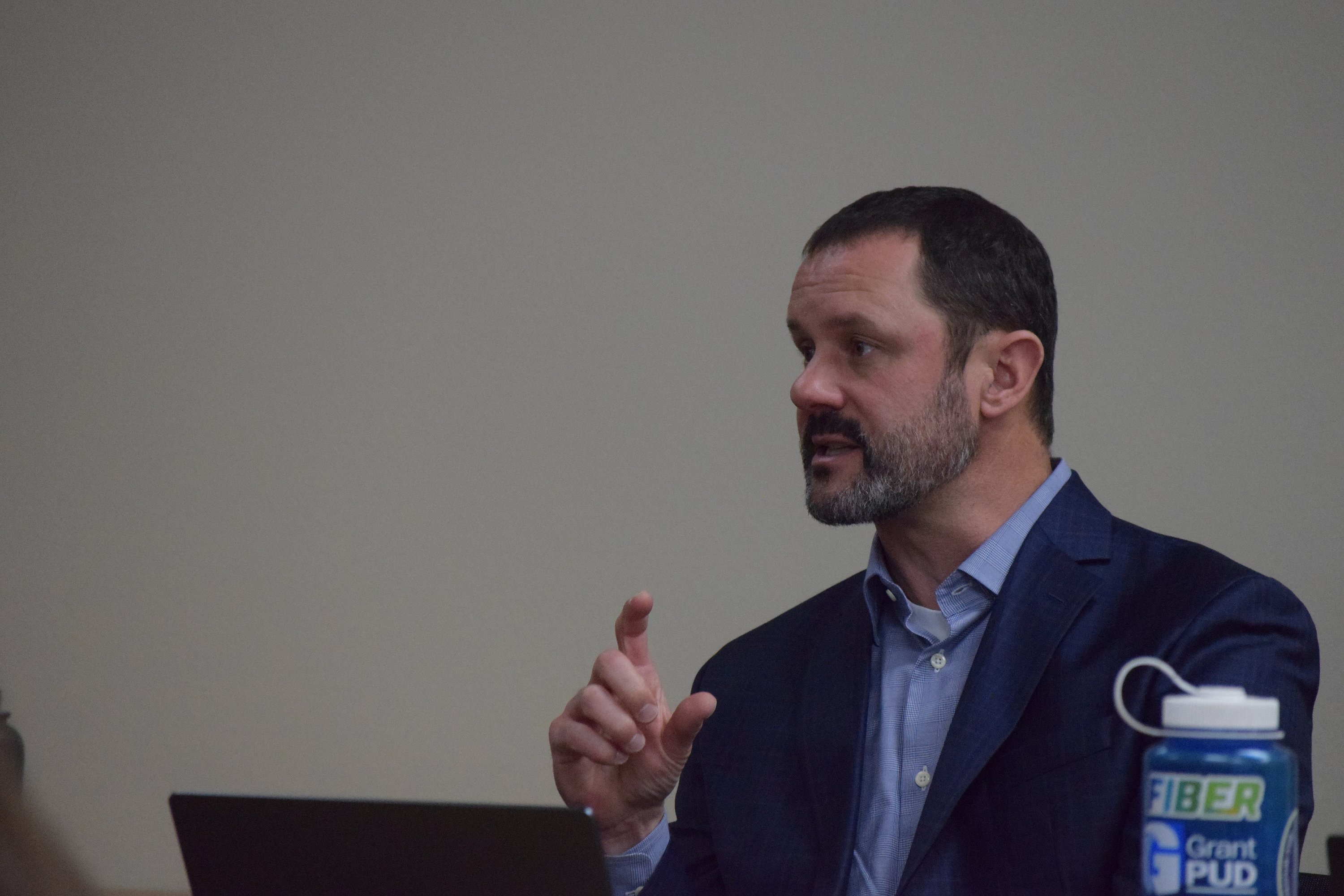Grant PUD still accepting input on proposed rates
EPHRATA — Grant County Public Utility District customers will have chances to comment on proposed changes to the policy for setting rates at PUD commission meetings in September and October. A revised rate-setting policy proposal is scheduled to be submitted to commissioners in November.
Julio Aguirre, PUD manager of rates and pricing, said the goal is to have a new rate policy in place by the end of 2024, when the existing one expires.
The current policy resolution was an update of one originally passed in 2015, which set some guidelines for minimum and maximum rates. The resolution stipulated the guidelines should be met by the end of 2023, but they weren’t. Chief Customer Office Ty Ehrman said the new rate policy probably won’t have those kinds of guidelines.
The rate policy did factor in annual rate increases, but PUD commissioners deferred those in some years, 2020 being an example. Commissioner Larry Schaapman said that’s less likely in the future.
The PUD didn’t always need the revenue, Schaapman said, and as a result, didn’t raise the rates. But times have changed.
“In the foreseeable future, we don’t see that happening,” he said.
The PUD owns and operates Wanapum and Priest Rapids dams. Power from the two dams, called the Priest Rapids Project, is cheaper because the PUD owns and operates them.
Demand for PUD power has increased to the point where the PUD will use up its allocation of electricity from the Priest Rapids Project before the end of the decade, possibly by 2026. When that happens utility district officials will be forced to find other — and probably more expensive — sources of electricity to meet the demand.
The existing rate policy gives the benefit from the cheaper Priest Rapids Project power to what are called core customers, which include residential, small and large commercial and agriculture. Schaapman called those “social benefits” and said that part of the rate-setting policy won’t change.
The proposed rate structure, Aguirre said, would break the cost analysis that goes into rates into two pieces.
“One would be power costs, anything energy-related,” Aguirre said. “And then the other piece will be everything else. The delivery charges, the transmission and distribution. We’re basically just separating those two big components and creating the mechanism to monitor and track and reconcile more frequently.”
Ehrman said that most of the demand for electricity is coming from industrial and large industrial customers outside the core customer group.
“If we have to buy more (electricity) in order to round out the amount of power that we need to in order to serve our system, those additional costs for those other resources will be borne by non-core customers,” Ehrman said.
Schaapman said PUD commissioners and officials want to adapt the rate-setting policy to changing times.
“We’re working toward getting our large customers on contracts,” Schaapman said.
A contract will allow more flexibility for the customers that use them, Ehrman said.
“Some of our customers want to have some level of price certainty for the future, sometimes even at a higher rate, but it gives them certainty on that rate for a longer period of time,” Ehrman said. “Sometimes customers want certain other things bundled into that contract, like they may want carbon-free power. They may want power specifically from renewables. They may want power that comes from a source outside our service territory. (In that case) we end up delivering it for them and just charge them for the delivery, basically.”
The proposed rate structure will probably shift some of the costs from core customers to other rate classes, Ehrman said.
“We’re still figuring out how much that’s going to be,” he said. “I’ll point out that right now, our non-core customers already pay above their cost to serve in order to keep rates lower for our core customers.”
Occasionally the PUD must buy electricity to meet demand now, Ehrman said, but buying power from outside the utility is going to expand as all the Priest Rapids Project power is allocated.
“Whatever we add is going to be more expensive, and as we use this method for structuring our rates, that means that additional cost, those more expensive resources, are going to be borne by our non-core customers,” Ehrman said.
Grant County PUD can stay competitive even with the cost of buying additional power, Ehrman said.
“We’re already extremely competitive in the marketplace, and the additional costs that we’re having to add for generation are the same types of costs that any utility is having to add,” Ehrman said. “At this point in time we’ve actually got an advantage in that we’re starting from a really competitive place with very cheap Priest Rapids Project power as a base generation source. So I think we’ll continue to be competitive for a long period of time.”



